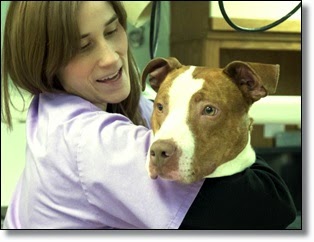Holistic health and natural remedies are things we commonly turn to when we don’t want to (or can’t) go to the doctor, and more people are relying on them for their furry family members now, too.
Instead of spending hundreds of dollars on costly prescription medications for your dog or cat, you can rely on natural remedies for some of the most common pet ailments. There are many things that can help ease your pets’ discomfort from pet food to people food and healthy treats to tinctures. Whether it’s fleas, dry skin, minor abrasions, upper respiratory infections, Fluffy’s hairballs or plain old stress, here are some tried and true natural remedies for your fur baby’s problems.
No More Fleas, Please!
When the fleas are biting and Sparky is scratching, get rid of those pesky pests by rubbing him down in citrus juice. Lemon, lime or orange rinds work great, so make the most of your fruit and have a nice tall glass of lemonade while you relax in the shade with your flea-free friend. Prefer essential oils? No problem! Rosemary, peppermint, and pennyroyal are great for itching associated with fleas. As a preventative, add a mixture of brewer’s yeast and a bit of garlic to your dog’s dry food. Fleas hate it! (Do NOT give garlic to your kitty though.)
Soothe Skin
Does your fur baby have irritated, itchy skin? It’s tea time! Just make chamomile tea as you normally would, pour it into a spray bottle, and store it in the fridge. The next time you see your cat or dog scratching, spray the cool brew directly onto his skin for immediate results. For even better results, add some vitamin E to the mixture! If your favorite little fur ball just can’t get relief, try an oatmeal paste using
If your favorite little fur ball just can’t get relief, try an oatmeal paste using oatmeal and water. Mix it up and apply directly to the affected area for 10 minutes to relieve Rover quickly. For cats, invest in a humidifier and switch to grain-free wet food, as dry kibble can actually cause dry skin.
Scrapes and Scratches
Accidents happen. Whether it’s a territorial scuff or playing too rough, toenails can cause all kinds of cuts, scrapes and scratches. The best thing to do for your dog or cat is to make sure the affected area is clean and free of dirty fur. You can use a simple saline solution for this. Either squirt some of your favorite contact lens cleaner directly onto the wound or mix up your own. This will wash away debris and encourage healing. Keep an eye on the wound for infection and take your furry friend to the vet if you see inflammation or pus.
From Meow to Achoo!
If your kitty is prone to upper respiratory infections and tends to have bouts with sneezing, runny eyes or any symptoms associated with feline herpes, they might respond well to L-lysine therapy. While this is a lifelong disease, the symptoms can be treated by just adding some lysine to her food. Because it’s a vitamin given in small doses, it won’t hurt your other cats if they all share food.
Hairballs Be Gone
Coconut oil is an amazing cure-all for humans and it can help with getting rid of Fluffy’s hairballs. While shaving your cat is technically an option, it might cause unnecessary tension between you and your favorite feline (We’re also joking here). Try the coconut oil first. Just half a teaspoon per day for a week should do the trick! Canned pumpkin can help, too, as well as olive oil.
Serenity Now!
Is your pet stressed? Whether it’s stress from a recent move, travel, storm or illness, there are some great ways to calm her down. Like humans, dogs have been known to respond well to lavender, chamomile and valerian. Just put a few drops on a clean rag and leave it just out of reach from your pooch, letting her bask in the relaxing scent. Try spearmint or cardamom oil to help with car sickness.
Happy, Healthy Pets
Now that you are armed with information and resources, you can help your pets (and your wallet) by easing their ailments from the comfort of your own home — and without any unnecessary chemicals. Not only does that create less stress for you, but Fluffy and Sparky will appreciate it as well!
FOLLOW US!





































